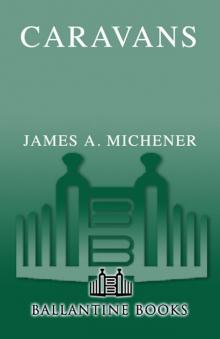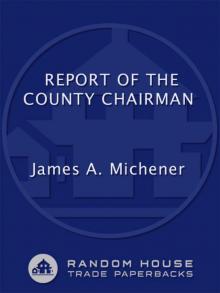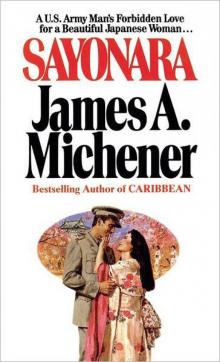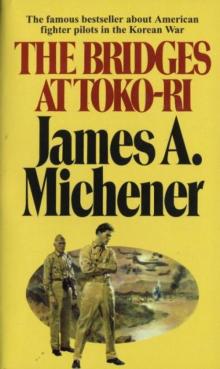- Home
- James A. Michener
Miracle in Seville: A Novel Page 7
Miracle in Seville: A Novel Read online
Page 7
The breeder was correct in his guess that the first of López’s bulls was a fine animal, and once the Gypsy saw that it moved properly, he was, as Don Cayetano predicted, showy. He pranced around the stately animal, almost burlesquing it. He used his cape behind his back and on his knees and while smiling at a pretty girl in the first row. He placed his own banderillas, and did so with grace. The man demonstrated that he was a poet, a ballet master, a sculptor, but even so, he used his fine bull improperly. At the height of his performance, which the less knowledgeable members of the public adored, I said to Don Cayetano: ‘Now if he can only do something acceptable with the muleta, we may again hear dianas.’ I am sure the Don also hoped to hear these evocative chords played when a matador executed a superb move, but he said nothing, for he was praying for the Gypsy to treat his bull properly.
No guardian angel helped us, for in the first half of his muleta work, López was unbelievably coarse. He appeared to be performing the passes that Camino and El Viti had done, but he used his unusual height to keep himself as far away from the bull as possible. At one point I said in a loud voice to Don Cayetano: ‘Damn it, he’s ruining a fine bull, and he’s too dumb to realize it.’ The breeder, who must have been appalled at this humiliation of a decent animal, made no response; he had already told me what he thought of López and saw no necessity to repeat himself.
The nadir of the Gypsy’s performance came when the bull, tired and no longer seriously engaged in this burlesque, stood immovable as if to say: Proceed with your nonsense—it’s beneath contempt. Knowing the exhausted bull was now safe, López dropped to his knees, stuck his face against the bull’s flat, wet nose and kept it there for almost ten seconds. Tourists in the audience were impressed. Having given that display of insolence, he turned his back to the bull while still on his knees and yawned, as if the job of dominating his bulls was boring.
But as in all bullfights, the time came inexorably when he had to kill the bull, and now there could be no escape in sensationalism. Lázaro López was obliged to stand in the plaza alone with a long, slim sword and kill the best bull he’d had in six years. I prefer not to degrade this fine animal by describing how López disposed of him, but the words ‘butchery’ and ‘assassination’ come to mind. In the middle of what threatened to become a debacle I said to Don Cayetano: ‘That son-of-a-dog should not be allowed in any public place, much less a bullring,’ but the Don, heartbroken over this obscene interlude in what should have been an afternoon of unbroken triumph, was too grieved to speak. Only after the bull finally died in shame—the Gypsy’s shame—did Don Cayetano say: ‘The wrong person died in that ring just now.’ I started to ask him what he meant, but now the mules came out at halftime to smooth the sand with drags, and one of Don Cayetano’s men came in with drinks.
‘That last bull could have been the best of the lot,’ the man said, and Don Cayetano agreed: ‘Can you imagine what a matador of honor like Diego Puerta could have done with him? Or Mondeño, who practiced his art with such gravity that he quit the ring to become a Dominican monk?’
The next two bulls continued the Mota triumph: Paco Camino cut two more ears and El Viti once again killed recibiendo, the only time in recent history any matador had done this twice in one afternoon, and he collected todos los trofeos. While I again watched the two triumphant matadors circle the ring together, I said to Don Cayetano: ‘It’s your triumph, not theirs. You gave them bulls that looked as if they wanted to help. A productive partnership,’ but he replied: ‘That’s expected of a good ranch.’ I then said: ‘I hope you’ve provided a good final animal for López, because if he handles it well you and the three matadors will leave this plaza on shoulders.’ A few triumphal exits, befitting a Roman emperor, had happened in Spain in recent years, but never after a fight with Mota bulls.
It was not to be. The Gypsy was even more shameful with his second adversary, for as soon as he had to work with the muleta, he complained to the president and the crowd that the bull had been fought before and that it was following him, not the muleta. Assuming the role of a heroic man asked to face an impossible animal, he begged the president tc have the bull taken from the ring as unfightable. At this disgraceful appeal, patrons screamed and began throwing things, and now López had just cause to fear attacking his bull with his sword, because a thrown cushion might really imperil him.
But the president rightly refused to allow the fight to end in that manner, and by telephone from his high box he instructed his agent supervising the ring to inform López: ‘You kill the bull or go to jail for forty days.’ Since that would eat into the heart of the season and cause him to lose half his earnings for the year, López summoned up what little courage he had, went out among the cushions while surrounded by his protective peons, and on the seventh wild attempt wounded the bull so severely that it finally fell down. Quickly the man with the dagger, who had been paid an extra fee by López ‘to be special quick on my bulls,’ darted out and cut the spinal cord. Don Cayetano turned to me and, in a voice quivering with anger, said: ‘That man should be removed from bullfighting,’ and I replied: ‘I was about to say the same.’
So Paco Camino, El Viti and Don Cayetano were by the cowardice of Lázaro López denied the right they had so richly earned of leaving the ring at Málaga on shoulders. As I trudged out of the plaza I thought: How cruel. The papers tomorrow will headline TREMENDOUS BRONCA AT MÁLAOA, and the story will deal not with the rebirth of Mota bulls but with the fact that the police had to arrest seventeen men who tried to assault the Gypsy torero because of his misbehavior in the ring, and that finally water hoses had to be used to disperse the rioters. Little wonder that Don Cayetano wanted to remove this despicable man from the bullring, but there was no legal way he could do this. The president had sent the order to kill the bull and López had obeyed, in his shameful manner. What was especially galling to Cayetano was the fact that the following Sunday López would again be fighting Mota bulls in Seville.
A VISITOR to the Seville spring feria will retain a precious memory of a spacious tree-lined park with wide, rambling sandy avenues along which the most beautiful women in Europe ride on horseback or in horse-drawn carriages from a past age. Their young men, in the Andalusian dress worn by their grandfathers, prance by on meticulously groomed steeds, and since half the parade moves clockwise and the other half counter, the men meet the same women twice on each circuit. Courtships are often arranged by meaningful glances of the eyes.
Colorful kiosks purvey drinks, sandwiches and candies, and a surprising feature of this almost bucolic scene is the endless number of casetas, small and large, tucked under the trees and lining the avenues. Some of these summer houses are splendid affairs, though built only for this brief season. As the riders pass a caseta they are apt to rein in their horses and lean down to greet the occupants of the caseta, who must, of course, offer copas of sherry. At night many of the larger casetas employ orchestras, and dancing can last into the dawn. There is no raucous aspect to the Seville feria such as one would find at the great carnivals of Rio or New Orleans or Trinidad; this is a stately celebration filled with grace and memories of old Spain.
Among the finest casetas this year was the one belonging to Don Cayetano Mota, for with the extraordinary revitalization of his ranch’s reputation at Málaga, he was in a mood to host his many friends who stopped by to congratulate him, to share a copa, and perhaps to linger on until the day’s roast beef was served wafer-thin on little biscuits flavored with French mustard. Twenty hours a day the Mota caseta throbbed with festivity, and Don Cayetano savored each moment, for there had been years when people stayed away from him because the fortunes of his ranch had been so depreciated.
But no matter how enjoyable the merrymaking at his caseta, each afternoon at half after four he and I rode into the city and took our seats in the Maestranza to watch that day’s fight, but we watched the bulls more than the matadors. With his assistance I was learning to estimate how well a bull would perform from
the way he entered the ring and responded to the first capes dragging in the sand. I was not able to detect the irregularities that he could—‘He favors his right leg, probably bumped it in the truck that brought him here’ or ‘That one has a bad eye, very dangerous when it comes time to kill’—but I was beginning to see why Don Cayetano loved bulls, those from the other ranches as well as his own.
At the Wednesday fight with Murube bulls he told me: ‘Great animals, aren’t they? Vistahermosa line, rather older than our Vázquez line. The two breeds have always been in competition, regardless of who the ranchers are in a particular period that represent them. That Sunday in Málaga, how we must have made the other Vázquez breeders preen!’ For the Thursday fight a special treat had been prepared, a rare appearance of the bulls from the notorious Miura strain. Normally these bulls were reserved for Sunday fights, because their fame guaranteed a gala day, but the Seville feria had sufficient leverage to get the Miuras for midweek fights. Aficionados held these bulls in high regard, for they were the fiercest of all the Spanish breeds, but Don Cayetano said: ‘I wouldn’t want to breed that line. It’s famous only because its bulls have killed so many matadors, including the immortal Manolete. I want my bulls to give every matador a fair chance to display his art. That’s been my dream in breeding, a bull of honor who will pull no surprises in the ring—the way a man should stand by his pledged word and not destroy another by a sudden shift in purpose.’
‘At Málaga your bulls were honorable. At times it seemed that every bull conducted himself precisely right for that particular matador. The way the big black one allowed El Viti to kill him while standing feet-in-cement. It looked to me as if the bull wanted to die that way, and helped El Viti accomplish it.’
‘You’re getting a sharp eye, Shenstone!’ As he said this I remarked to myself: Strange how forthcoming he is about other people’s bulls but how reticent about his own.
Clearly, he was more concerned about caring for his bulls than about discussing them. For he paid fanatical attention to the welfare of his animals. Every morning at dawn, no matter how late the festivities in his caseta had gone on, he left his bed and rode across the Guadalquivir to Triana, where he went directly to the Virgin of the Toreros. There he prayed in silence for many minutes, seeking her assistance on the last day of the feria. I accompanied him to the church on Monday and Wednesday—on Tuesday and Thursday I had been too sleepy from reveling—and saw nothing unusual as he implored the Virgin’s help in seeing that his bulls conducted themselves respectably. I also studied the little church made famous by the fact that Triana bullfighters came here to pray before their major fights, but made even more famous by the custom that when a Triana Gypsy died in the ring, killed by a fighting bull, his corpse lay in state before this Virgin, to whom he had dedicated his life and his art. To men in the bullfighting fraternity this was a sanctified place, and the marble plaques set into the walls with their florid statements about this or that matador’s death lent the church an aura that no other had. In accompanying Don Cayetano to pay his respects to the Virgin, I felt privileged to have been able to share this shrine with the toreros.
On Friday morning, when we arrived just as the sun rose, something happened while Don Cayetano was kneeling in prayer that quite staggered me. I happened to be looking directly at him—bowed head, with hair falling in his eyes in front and bald in back, heavy shoulders, pudgy hands clasped in prayer and held close to his chest—when from her place above the altar I thought I saw the Virgin descend, walk in a stately manner through the sunbeams that filled the church and come directly to where Don Cayetano knelt. Illuminated by the same aura that I had seen underneath her float on Sierpes, she stood over my friend as if bestowing a benediction, and I heard her say as clearly as if she had been speaking to me from a distance of two feet: ‘Once more.’ At this she turned to go back to her accustomed place at the front of her church, but when she reached it she paused, faced Don Cayetano again and raised her right arm in the gesture of bestowing a blessing. From there, and in a clear voice, she repeated her cryptic message: ‘Once more!’ and she resumed her wooden image and her position in the niche.
I was afraid to speak of this apparition to Don Cayetano, for he had given no indication that he had either seen or sensed it. If it was merely an illusion of mine because I was so tired, he would not have heard the four words. I studied the scene where this miracle had occurred—I could call it nothing less—and as my eyes roamed the area I broke into laughter, for it was obvious that what I thought I had seen had been caused by the strong sunlight streaming into the darkened church. It was an illusion, nothing more, and now even as I studied the sun’s rays I could see that they made the Virgin seem to be moving again.
But what about the four words? I doubted that I could really have heard them. I had been too generous with my sherry toasts at the Mota caseta and was obviously in a euphoric state. More likely, I had become so obsessed, like Don Cayetano himself, with the fortunes of the Mota ranch that I had begun to imagine favorable omens that were clearly unreal. The combination of circumstances—tricks played by the sunlight, the effects of the sherry, the intense preoccupation with the hopes of the Mota ranch—had accounted for what I had interpreted as a miracle. It was brain weariness, that’s what it was.
As Don Cayetano and I were about to leave the church, we saw the Triana matador Lázaro López coming in, and as soon as he spotted the Don he leaped at him, grabbed him by the shirt at his throat and cried maniacally: ‘I know what you’ve done, you swine. You’ve bewitched your bulls. I don’t know how you did it, but you’ve found the secret.’
I tried to separate the two men because López was much younger and more powerful than Don Cayetano and might have hurt him badly had he started throwing his fists, but to my astonishment the Don did not want my help. Indeed he started to attack López, both physically and verbally: ‘You’re not a bullfighter, you’re an assassin! At Málaga I provided you with the two best bulls of the afternoon. They were perfect. Allowed you to do whatever you wished with them. Didn’t you feel the magic, you fool?’
‘I did,’ López shouted, ‘and it terrified me. It wasn’t real. No bulls behave with such perfection. When I saw El Viti kill his second while his feet were planted in stone, I knew I was involved in witchcraft of some kind. That bull wanted El Viti to kill him, and so did Paco Camino’s. Somehow, you evil old man, you bewitched those animals, and since you hate me, I knew that in the last moments of the last bull, you’d use him to kill me.’ Drawing back, López pointed a long finger at Don Cayetano and said in a deep, menacing voice: ‘I’ve discovered your secret, you agent of the devil. You’ll not kill me with your witchcraft bulls. Not me!’
‘You deserve to die on the horns of a bull, the indecent way you mistreat them—the horrible way you destroyed my two great bulls at Málaga. López, you could have left the ring on shoulders through the great gate if only you’d done your share!’
The matador thrust Don Cayetano aside and growled as he moved forward to pray to his Virgin for success and safety on Sunday: ‘I’ll see you in Seville, Don Cayetano, you and your evil tricks.’
‘On Sunday, then,’ Mota said, with a menace of his own. Each adversary stepped back with mock politeness to let the other pass, and the last I saw of López he was kneeling in the exact spot occupied by Don Cayetano only a few minutes before.
ONE OF THE BIGGEST DAYS at the Seville spring feria was the last Saturday, for then older men, who had not been able to participate earlier in the week because of business responsibilities, paraded to give the procession a more stately character. After our early morning prayers in Triana, I rode my own horse alongside Don Cayetano’s because I had hired a Spanish photographer to snap some shots of me riding with the subject of my article. I hoped his camera might catch us stopping at one of the more ornate casetas, accepting sherry from a señorita dressed in a red-and-gold flamenco costume. One picture like that would epitomize the feria and allow me more spac
e to describe the performance of the Mota bulls.
That afternoon the big event was the first appearance in the Maestranza of fighting bulls from the recently established ranch of the charismatic Peralta brothers, Rafael and Angel, who had grown up near Seville and who fought bulls from horseback. They were an extremely popular pair in Seville, and aficionados who attended the fight would be hoping that their bulls performed well. It promised to be a gala.
When bulls were fought from horseback, a skill that the brothers had perfected, this act in the corrida came first. This distinct art form placed the matador astride a marvelously trained horse with which he performed extraordinary feats of skill and daring, culminating in the moment when, guiding his horse only with his knees, he held aloft two banderillas, rode straight at the bull, leaned far out of his saddle and placed the barbs in the neck muscle of the charging bull, then nudged the horse away from the horns at the last possible moment. It was breathtaking, but not entirely to my taste.
Of course, the horseman would try also to kill while mounted, using a long lance, but this maneuver required such a demanding mixture of horsemanship, skill with the right arm and luck that it was rarely completed. In such a case the horseman dismounted, took an ordinary muleta and sword and dispatched the bull on foot. On this afternoon it would have been improper for either of the Peraltas to fight and kill their own bull, so the assignment was given to the horseman Fermín Bohorquez, who performed commendably. The afternoon was off to a fine start, but the Peraltas’ bulls, giving ample evidence that they came from a new ranch, so dispirited the other three matadors that they gave only perfunctory performances and the affair degenerated into a corrida that produced no ears for the matadors and no accolades for the Peraltas. True aficionados did not lament the disappointing afternoon; they accepted it as the luck of the draw and were consoled by the thought of tomorrow’s opportunity to see whether the apparent revitalization of the bulls of Mota extended into a second Sunday. If it did, the fight in Seville could be historic.

 Mexico
Mexico The World Is My Home: A Memoir
The World Is My Home: A Memoir Sayonara
Sayonara Chesapeake
Chesapeake The Novel
The Novel Rascals in Paradise
Rascals in Paradise Return to Paradise
Return to Paradise Presidential Lottery: The Reckless Gamble in Our Electoral System
Presidential Lottery: The Reckless Gamble in Our Electoral System The Source
The Source Poland
Poland Space
Space Caravans
Caravans Creatures of the Kingdom: Stories of Animals and Nature
Creatures of the Kingdom: Stories of Animals and Nature Iberia
Iberia Hawaii
Hawaii The Watermen: Selections From Chesapeake
The Watermen: Selections From Chesapeake Report of the County Chairman
Report of the County Chairman The Covenant
The Covenant The Bridges at Toko-ri
The Bridges at Toko-ri Matecumbe
Matecumbe Journey: A Novel
Journey: A Novel Centennial
Centennial Sports in America
Sports in America Texas
Texas Miracle in Seville
Miracle in Seville This Noble Land: My Vision for America
This Noble Land: My Vision for America Tales of the South Pacific
Tales of the South Pacific Bridges at Toko-Ri
Bridges at Toko-Ri Space: A Novel
Space: A Novel Presidential Lottery
Presidential Lottery Sayonara: A Novel
Sayonara: A Novel This Noble Land
This Noble Land The Covenant: A Novel
The Covenant: A Novel Miracle in Seville: A Novel
Miracle in Seville: A Novel The Bridge at Andau
The Bridge at Andau Source
Source The Source: A Novel
The Source: A Novel Journey
Journey Recessional: A Novel
Recessional: A Novel Legacy: A Novel
Legacy: A Novel The Bridges at Toko-Ri: A Novel
The Bridges at Toko-Ri: A Novel Poland: A Novel
Poland: A Novel